A guest post about Sheffield Manor Lodge by On the Tudor Trail reader, Keeleigh Hodgson. Enjoy!
To be absolutely honest I never thought I would write a piece about this location. It was simply by chance that I stumbled upon Manor Lodge. There was an exhibition about ‘Tudor Sugarcraft’ which piqued my interest and so I thought I would explore it at my own leisure, admire the recreations and, as usually happens when I visit Museums, feel saddened at the prospect of not being allowed to take pictures (I am a visual person after all). I normally wander around thinking, “this is beautiful but something is missing”, I always have it in museums, I love history yet… Museums and the like can feel incredibly stuffy, as if the great characters of the past were never actually there and the life has been sucked out. This wasn’t the case at Sheffield Manor Lodge. Since my visit I have been researching the history and have even become a ‘Friend of Manor Lodge’! Why? Because it is something beautiful – more than aesthetics, it is all the little touches and the colourful history which has made me want to share it with fellow members and hope that it doesn’t sound too much like a sales pitch!
Firstly, what makes this most interesting for me is that it is in Sheffield, Yorkshire. Many a time I have complained to my partner, “You Yorkists do nothing for heritage! You have all robbed it and I am now left with ruins and industrial museums!” But, all along there was a hidden gem in Manor Lodge, whose patron is my favourite Dr David Starkey (I am like a schoolgirl when it comes to Dr David Starkey…) I hope you enjoy reading this, though I have never proclaimed to be much of a writer! It is more to share information about this interesting location. I will try my best to give a historical context to Manor Lodge and give you some details of what to expect on your visit.
So, here it is – Manor Lodge (many a time mistaken for Sheffield Castle) dates back to 1066. For this piece, for Tudorphile reasons, I am going to concentrate particularly on the Elizabethan era, but the history prior to this is equally as exciting to me.
8th November 1530 – Cardinal Wolsey, once a man held in high esteem by Henry VIII, was facing imprisonment in the Tower of London. Manor Lodge was to be part of Wolsey’s final journey. Here, he was to be the guest of George, 4th Earl of Shrewsbury and their meeting immortalised in stained glass at Sheffield Cathedral. In the words of George Cavendish “When we came into the Parke at Sheffield, nighe to the Lodge, my Lord Shrewsbury and all other gentlemen and servants, strode without the gates to attend my Lord’s cominge to receave him. At whose alightinge the earle received him with much honour and embraced my Lorde sayinge these words ‘ My Lorde, Your grace is most hartelye welcome unto me, and I ame glade to see you here in my poore lodge, where I have long desired to see you, and muche more gladder if you had come after another sort…”
Surviving records suggest that the Earl was a supporter of Wolsey and had discussed ways of helping him and of mending his relationship with Henry. However, on the fifteenth night the apothecary was called as Wolsey was suffering violent stomach pains, which failed to ease. Later the physician Dr. Nicholas was summoned and he declared Wolsey was living out his last days.
At Leicester on the 29th November 1530 – Wolsey died.
“Had I but served God as diligently as I have served the king, he would not have given me over in my gray hairs.”
Moving forward in history to the 1570s – the 6th Earl of Shrewsbury, George Talbot and his wife Elizabeth Hardwick began an overhaul of the manor, introducing a gatehouse and octagonal towers. It is difficult to say whether this was the start of Elizabeth’s interest in architecture and interior design or whether it was simply done to accommodate their new guest. It was as if history was repeating itself and Manor Lodge was once more to serve as a prison for nobility and royalty, this time the ‘guest’ was Mary Queen of Scots.
Although at least for Mary, the story of her time here reads more pleasurably. At the Lodge she would spend her time creating embroidery patterns with Bess, one depicts their initials, ‘E’ for Elizabeth Hardwick and ‘M’ for Mary entwined and in the middle an S for ‘Shrewsbury’ and ‘Scotland’. The arrows are meant to represent the Crown, possibly not on the right persons head… Interestingly, Bess attended Elizabeth’s court and George Talbot was Earl Marshall of England! The relationship between Bess and Mary soon soured – Bess accused George of an affair with Mary and, as some do nowadays with guests, Bess believed Mary to be taking liberties i.e. milk baths and hosting too large an entourage. Soon, poor George started suffering from paranoia and it is hardly surprising considering he was hosting a member of royalty, dealing with Bess’ suspicions of an affair between he and Mary, pressured from other tenants and under the ever watchful eye of Elizabeth I.
By 1584 Mary was under the supervision of Sir Ralph Sadler and George’s relationship with Bess was becoming more distant, with Bess spending more time at Chatsworth and Hardwick. When George died in 1590, Bess purchased Hardwick Hall from her brother and went onto create what we know as ‘Hardwick Hall, more window than wall’.
If you do visit Manor Lodge you can expect more than a walk around the ruins. For £1.50 (cheaper than most magazines) you can go on a guided tour. The group number is intimate; at first it was just my partner and I! Later on, more people joined but it never felt impersonal and the tour guide welcomed questions. They will even let you take pictures! This is what made Manor Lodge my type of place, yes the history was interesting, the excerpts from the records informative and the Turret House (the only surviving building of the Tudor Manor Lodge to survive intact) beautiful, but overall it was the amount of time and care that the staff and volunteers dedicate to bringing Manor Lodge to life.
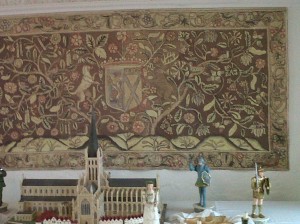 What makes this place most exciting are the personal touches – there is an ‘artspace’ where artist Frances Priest has taken inspiration from the beautiful Tudor ceiling and recreated it in dinner ware (manorware). The Manor Weavers, who have recreated tapestries of Bess of Hardwick’s work, show what natural dyes were used and now more modern/Tudor types. The re-enactors are great at the Lodge (We had the cook, who was excellent and told of us Mary’s letters being found in slurp). What is a great touch too, is that in the ruined parts of the Long Gallery, they have planted a Lavender Labyrinth and the ruins of the kitchens are now an apothecary garden. The staff are really friendly, I mentioned that I was a history student and was immediately told of the history of the home and informed of various talks offered throughout the year. It was a pleasantly surprising experience.
What makes this place most exciting are the personal touches – there is an ‘artspace’ where artist Frances Priest has taken inspiration from the beautiful Tudor ceiling and recreated it in dinner ware (manorware). The Manor Weavers, who have recreated tapestries of Bess of Hardwick’s work, show what natural dyes were used and now more modern/Tudor types. The re-enactors are great at the Lodge (We had the cook, who was excellent and told of us Mary’s letters being found in slurp). What is a great touch too, is that in the ruined parts of the Long Gallery, they have planted a Lavender Labyrinth and the ruins of the kitchens are now an apothecary garden. The staff are really friendly, I mentioned that I was a history student and was immediately told of the history of the home and informed of various talks offered throughout the year. It was a pleasantly surprising experience.
Of course in a place such as this, it is rumoured to have a resident ghost who takes delight in knocking poor old George Talbot’s portrait off the wall when Bess of Hardwick is giving a talk!
Dr David Starkey is a patron of Manor Lodge where they regularly host talks – frequently by Tudor Historians i.e. Linda Porter and recently Leanda De Isle and soon hoping for the man himself. Find out more about upcoming events here.
Manor Lodge is free to visit, but if you would like to go on the guided tour it is £1.50. The tour guide is fantastic and you may even get a chance to see Bess of Hardwick.
The Sugarcraft Exhibition is on display in the Turret House from 3rd March to 8th September 2012.
On a side note, one of the sugar designs on display is a unique model of St Paul’s, as originally designed for a banquet hosted by cardinal Wolsey for Henry VIII.
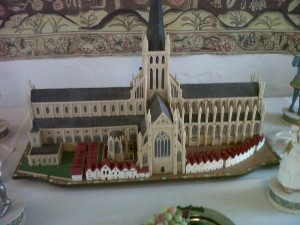
A unique model of St Paul' Cathedral as originally designed for a banquet hosted by Cardinal Wolsey for Henry VIII.
By Keeleigh Hodgson
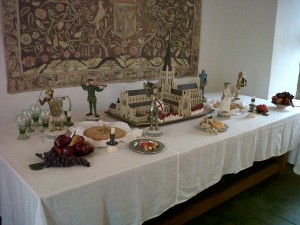
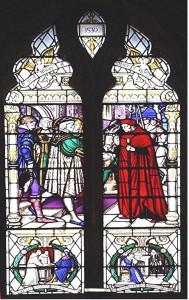
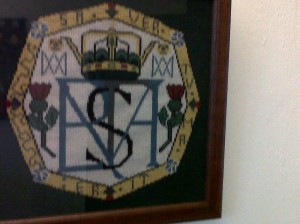
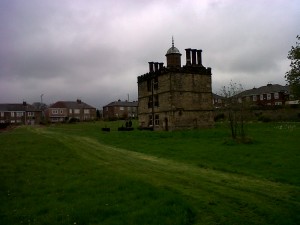
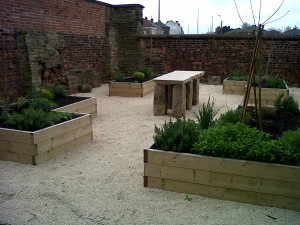
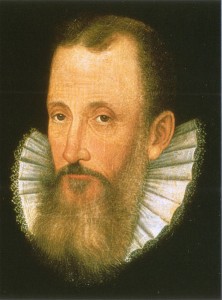
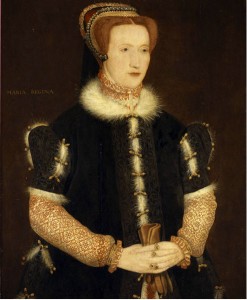
















My hubby was born in Rotherham, just a few miles from here, and this was one of the places he took me to visit when we first met, on his motorbike, many moons ago, it wasn’t like you described then, but it was still a little gem, not often visited it seemed. I am really pleased it has had a make over, and the next time we visit the in-laws I will pay it another, long over due visit, we live 450miles away now so it maybe a while…
A great read Keeleigh, though I best not tell hubby what you said about the ‘Yorkists’ being historical vandals, haha, I’m a Nottinghamsire lass so I’m not bothered
I agree Manor Lodge is a wondrous place and more and more exciting things are happening there. Whereas collectively Sheffield might seem like phillistines they are a huge number of us working to preserve Sheffield’s heritage. Manor Lodge is just one example of people power within Sheffield. There are also a suprising amount of old buildings such as Carbrook Hall, Vernon Hall in Park Lane. Queens Head at Ponds ford, Beauchief Abbey and countless old farmhouses which are still residential. So not so much a wasteland just not publicised. I am a supporter of Bishops House, a beautiful half timbered Yeoman farmers house/small manor hall which is situated in Meersbrook Park in Sheffield. I challenge you to visit there and not be captivated by its charm.
A little over a year ago, recognizing certain clues in the 1841 census, I managed to determine that my ggg-gf, his siblings and his parents lived in the Long Gallery portion of the Manor Lodge ruins (1830-48). I am even confident in knowing the specific location their abode in the Long Gallery. In Jan 1842 my gggg-gm died there of TB. By 1849 my ggg-gf and widowed gggg-gf were pursuing a pioneer lifestyle in the US (northern Pennsylvania), and up until now, nobody on this side of the Atlantic had any idea of their once having lived at the Manor.
It appears that in 1841, there were 4 families numbering 26 persons occupying the Long Gallery. There were 2 households numbering 9 persons occupying the Turret House (which was operating as a farm at the time), and the South Range portion of the Manor was occupied by 16 families, numbering 101 persons…. the Grand Total being 136 persons occupying the Manor Lodge complex in 1841.